
I’ve played a lot of picross. And I mean a lot. I started playing picross games on the DS back when Jupiter released Picross DS and never looked back. If you’re not familiar, picross (or nonograms) are a type of logic puzzle invented in the late 80s where you use a grid and numbers create pictures. There’s a line of numbers on the top of the puzzle and one on the side. You use the numbers to fill in the spaces, leaving a space between each number. They’re devious puzzles that can be incredibly challenging once they get larger and I’ve spent many an hour challenging my brain to fill in pictures.
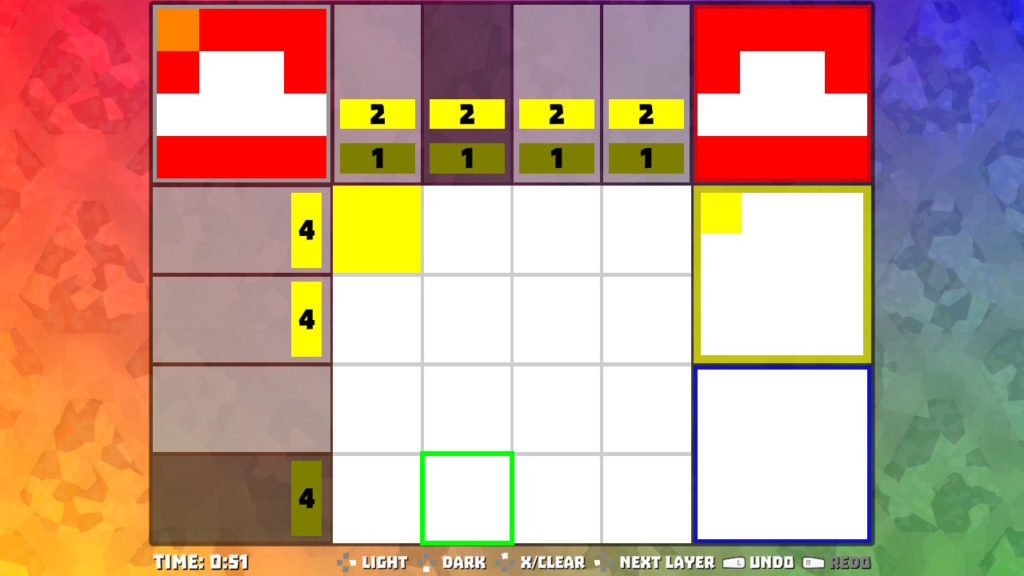
Here’s how they work. For example, if there was a number set (4, 3, 6), you would fill in four spaces, leave one space, fill in three spaces, leave one space, and fill in six spaces. If that was a 15 x 15 grid, that would complete a line. Once you’ve completed a full puzzle, it forms a picture. They’re straightforward, but tough. Over the years as the genre evolves there have been variations, including adding colors and changing the color of the numbers to signify what color to use, and even putting the whole puzzle into 3D and creating a 3D image on an X, Y, Z axis!
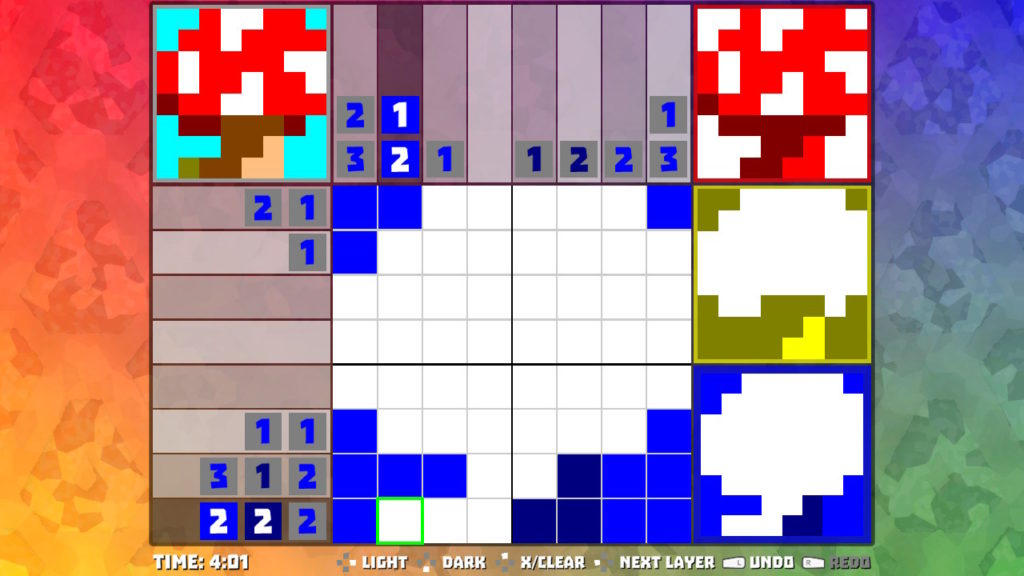
Depixtion from DevHour Games adds a new twist to the picross mix. Instead of simply adding color, you solve three different picross grids for each puzzle, one in red, one in blue, and one in yellow. Each has a darker and lighter shade. Solve the red grid, move on to the yellow. Solve the yellow grid, and it overlays onto the red one. Solve the blue, and complete the puzzle, which then overlays onto the red and yellow ones to create a full color image. It’s a unique take on the genre and one I hadn’t seen before.
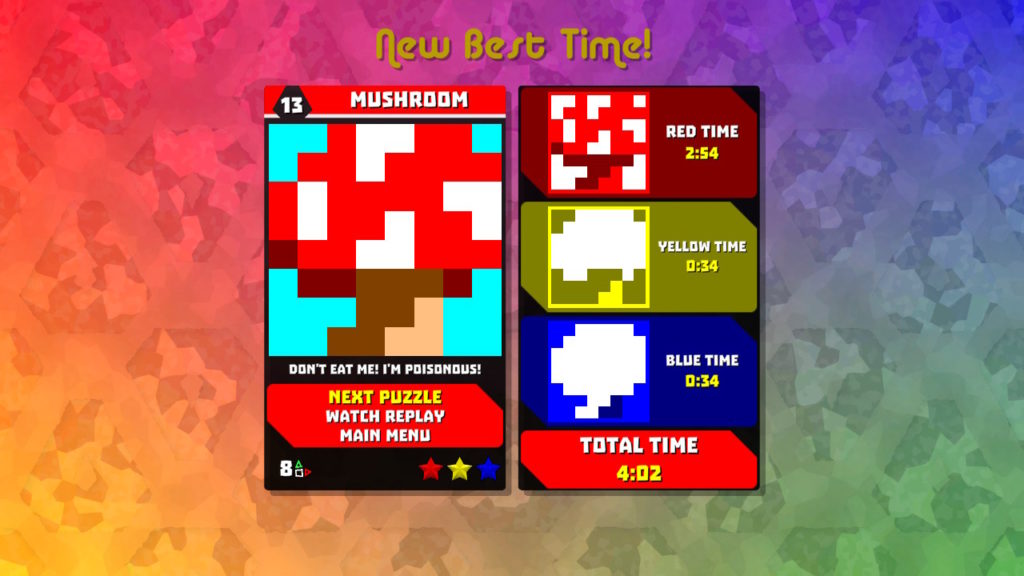
The hardest part of Depixtion was that it doesn’t follow the standard rules of picross. Remember when I told you there’s a space between each number? Not in Depixtion. Here, there’s only a space between each number if that number is the same shade. If I have the same number set (4, 3, 6) and the 4 and 3 are dark red and the 6 is light red, then there’s a space between 4 and 3, but not one between 3 and 6. It’s confusing and takes a bit to get the hang of. Ultimately, it makes the puzzles a bit easier, but when you simply look at a line of numbers adding the spaces and numbers together, you might think you’ve solved a line when really you are a couple spaces shy, especially on a larger grid.
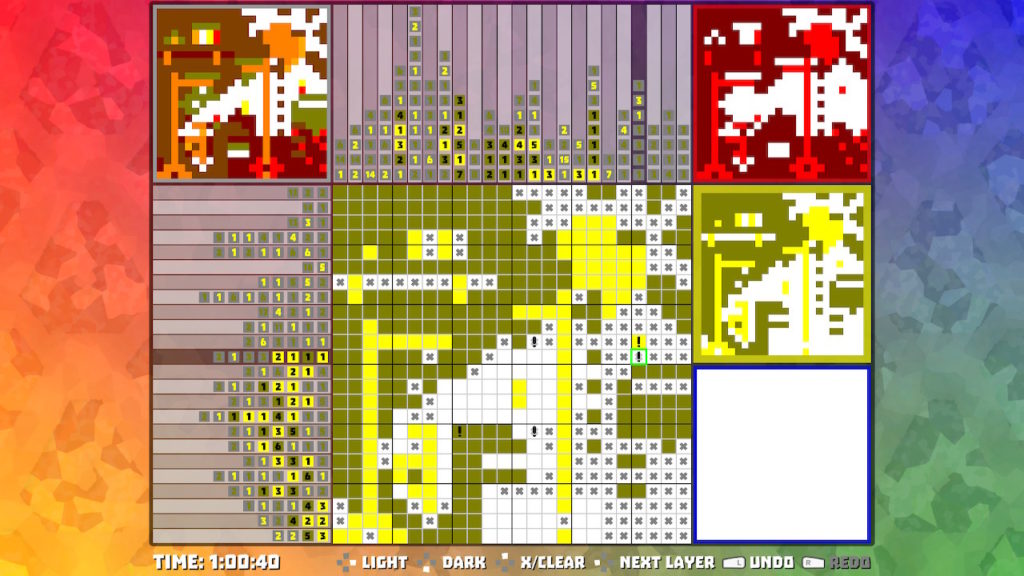
In Depixtion, the grids range in size from 4×4 to 24×24. With each puzzle having three picross puzzles contained within, that’s a total of 288 puzzles to solve making 96 images. A 4×4 puzzle won’t take you long, only a minute or two once you get the hang of it, but the 24×24 ones can easily take hours, especially if you make a mistake. Speaking of mistakes, you can check to see if you’ve made any in a given puzzle if you’re stuck, but it eliminates the star ranking you get for solving a puzzle on your own. It’s not really a penalty unless you’re completely OCD, but the star rankings show up on your puzzle selection screen, one star for each color in each puzzle.
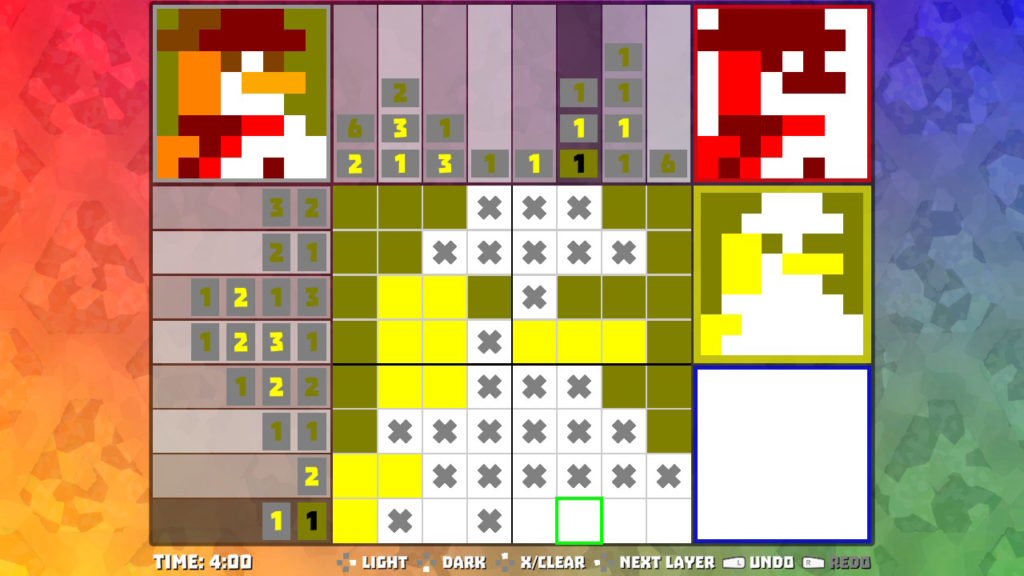
Personally, I blew through most of the early puzzles quickly so I decided to blaze right to the end and finish puzzle 96. You can select any puzzle in the game at any time with no unlocking. It took me a couple of hours to finish the final puzzle, and at that point, I was pretty unfulfilled. Sure, it’s challenging, but the half of that is the sheer size of the puzzle and how closely I had to stare at the screen, since there’s no zoom function and I was in handheld mode, a definite failing for Depixtion. Additionally, Depixtion has some of the worst background music ever and within the first hour I had turned the sound off rather than try and stab my eardrums out with a toothbrush. It’s truly atrocious, like being trapped in an elevator from hell and it loops fairly fast, so you simply don’t want to hear it. You can play Depixtion on a big screen as well, and it’s easier to see, but picross is really more of a portable thing in my opinion and it was hard to stay awake sitting in front of the TV staring at numbers late into the night. The biggest mistake here by far however, was the lack of a touch screen mode for undocked play. Picross is pretty much designed for touch screens and to leave this out is practically criminal. I can’t imagine why this wasn’t incorporated for the Switch, as it streamlines the experience so much that it should be a necessity.
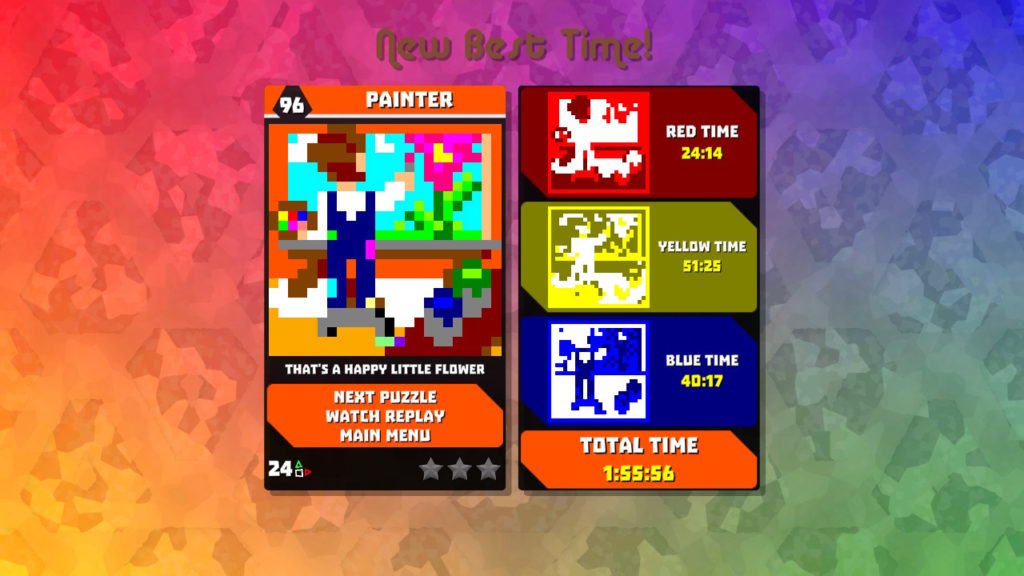
Graphically, the images weren’t interesting for Depixtion either. Some picross games have exceptionally creative images. The original DS ones from Jupiter animate when you’ve finished them and can be really neat in the later ones. Nintendo put out a Zelda picross game a while back for the 3DS and had awesome Zelda themed images that animated when you completed them as well. The best picross game I’ve ever played, which is completely free for mobile phones, is Pixel Puzzle Collection, a 2018 game from Konami which celebrates the history of Konami video games and has incredibly challenging puzzles, boss puzzles, and hundreds and hundreds of images. It’s so challenging that I’ve spent days on a puzzle, only solving it after finally utilizing a hint function. Once you beat the game, it loops and you’re unable to block out squares that you know don’t have marks in them, ramping up the difficulty to double. I’m still playing it to this day and I’m at 149% completion.

Depixtion simply doesn’t have the staying power of other picross titles. It’s a clever take on the genre, but it’s not addictive in the same way. With 96 puzzles, you’ll get some hours out of it, but I never felt as challenged, even on the most difficult puzzles. Instead, it was more like a plodding inevitability that I would solve each puzzle. You can almost set a timer and finish one. Sure, you’ll take a while, but the shade and color layering mechanics just aren’t that innovative and the final images were somewhat tedious, even on the toughest puzzles. They did have clever names and some of them had some great references, but I just didn’t get that sense of joy in finishing them that I get in other picross games.
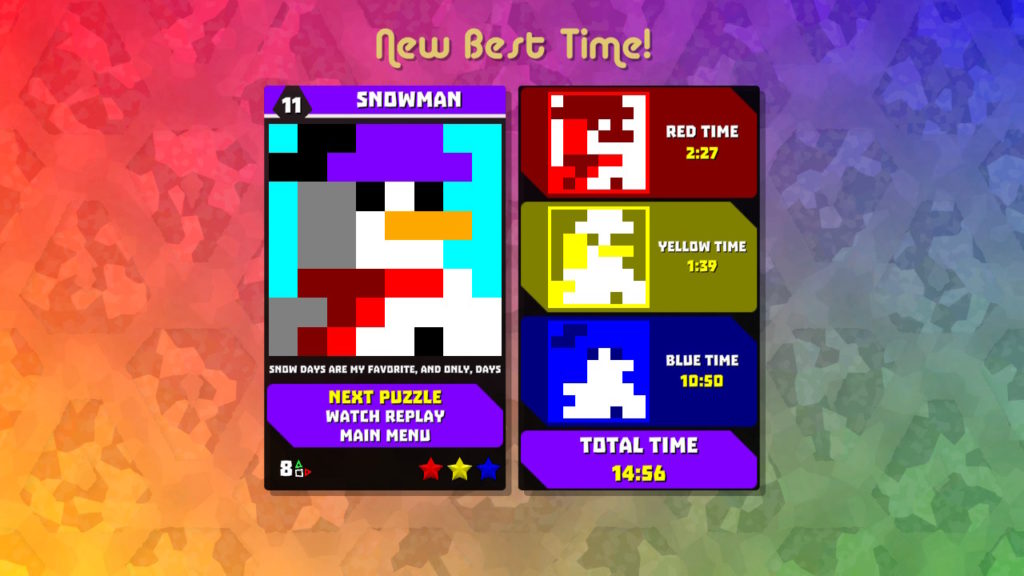
This is a serviceable picross game with a unique take on the genre, but Depixtion isn’t shattering your concept of picross, if in fact you had one in the first place. At $8, it’s not going to break the bank and you’ll while away some time, but it isn’t the best picross experience to be had, it’s not the only picross game on the Switch, and it doesn’t have some of the functionality I like to see in a picross game such as hints, a zoom function, and strikes to your timer for mistakes. Newcomers to the genre might enjoy it more, but it’s a fundamentally different experience with the color shading and spacing changes and definitely not how other games in the genre feel. You won’t be wasting your money here and you’ll definitely clock the hours to finish every puzzle, but it’s not the be all, end all of picross.
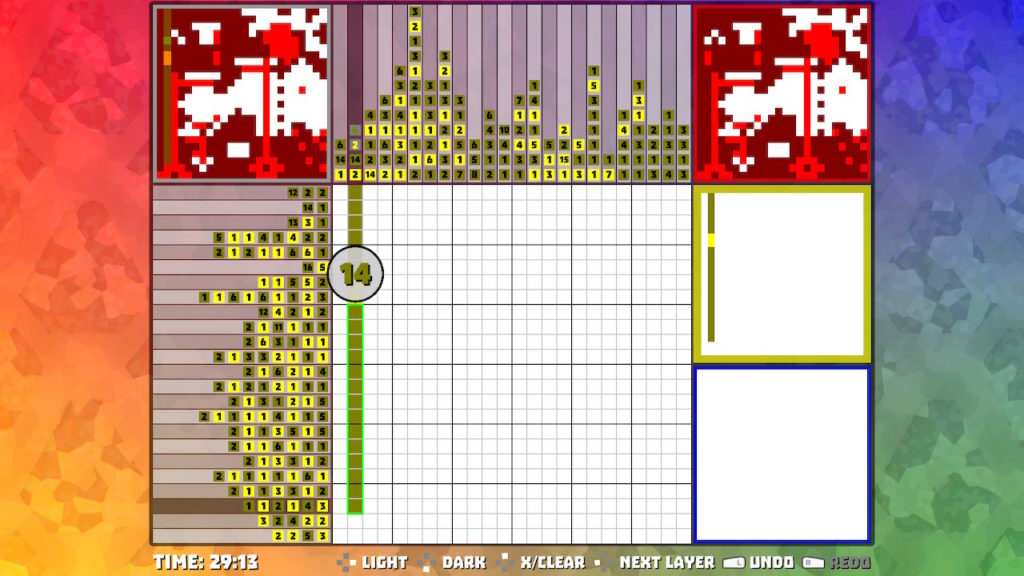
This review was based on a digital copy of Depixtion provided by the publisher. It was played on a Nintendo Switch in both docked and undocked modes and played equally well in both. Depixtion is also available for the PC on Steam. All screenshots are of actual gameplay. If you have a smartphone, don’t hesistate to download Pixel Puzzle Collection, easily one of the best picross games out there and totally free!

